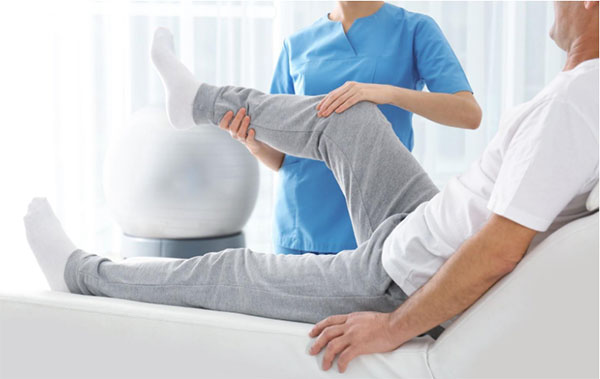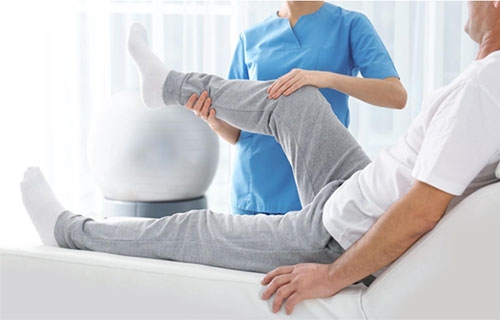
Every October, we celebrate National Physical Therapy Month and recognize the vital role physical therapy plays in restoring movement and independence. For patients undergoing hip or knee replacement, PT is more than just a rehabilitation tool, it’s the bridge between surgery and long-term success. Here’s how physical therapy supports recovery after joint replacement.
Why Physical Therapy Matters After Joint Replacement
Hip and knee replacements are designed to relieve joint damage and restore mobility, but the soft tissues surrounding and supporting the joint also must also play a role in the success of the recovery. Physical therapy strengthens muscles, improves flexibility, and retrains movement patterns that may have been altered by years of arthritis or injury. Structured exercises also help reduce stiffness, enhance circulation, and lower the risk of complications.
The Benefits of Early Motion and Guided Exercises
With modern approaches such as the subvastus surgical technique, patients often experience less muscle trauma, which allows for earlier mobility. Physical therapists guide patients through safe, gradual exercises beginning almost immediately after surgery. These tailored movements not only build strength but also restore balance and stability, helping patients return to walking, climbing stairs, and daily activities with greater confidence.
How Robotics Enhances Recovery Potential
Advances in robotic-assisted technology, ensure precise implant positioning and improved alignment. This accuracy supports smoother joint motion and can make therapy more effective. After robotic surgery, patients often find they can participate more fully in physical therapy earlier in the recovery process, setting the stage for stronger long-term outcomes.
Individualized Rehabilitation Plans
No two patients recover at the same pace, which is why personalized programs are designed to match each patient’s needs. Whether the focus is regaining knee bend, strengthening hip muscles, or improving walking mechanics, individualized PT programs provide the structure and accountability that support steady progress over time.
Building Toward Lasting Independence
Physical therapy doesn’t end once basic mobility is restored. Long-term recovery often includes advanced exercises to increase endurance, restore athletic function, or maintain joint health. These steps not only protect the new joint but also improve overall well-being, helping patients enjoy greater independence and confidence in their daily lives.
Achieving lasting joint replacement success depends on the partnership between advanced surgical care and dedicated physical therapy. Together, they restore strength, mobility, and confidence in every step.
AUTHOR: Charles Claps, DO is a board-certified fellowship-trained orthopedic surgeon specializing in robotic-assisted joint replacement surgery at Resurgens Orthopaedics in Atlanta. Dr. Claps is an industry leader in Mako Robotic Assisted Hip and Knee replacement across Georgia, and an active member of the American Association of Hip and Knee Surgeons, the American Association of Orthopaedic Surgeons, and the American Osteopathic Academy of Orthopedics.


